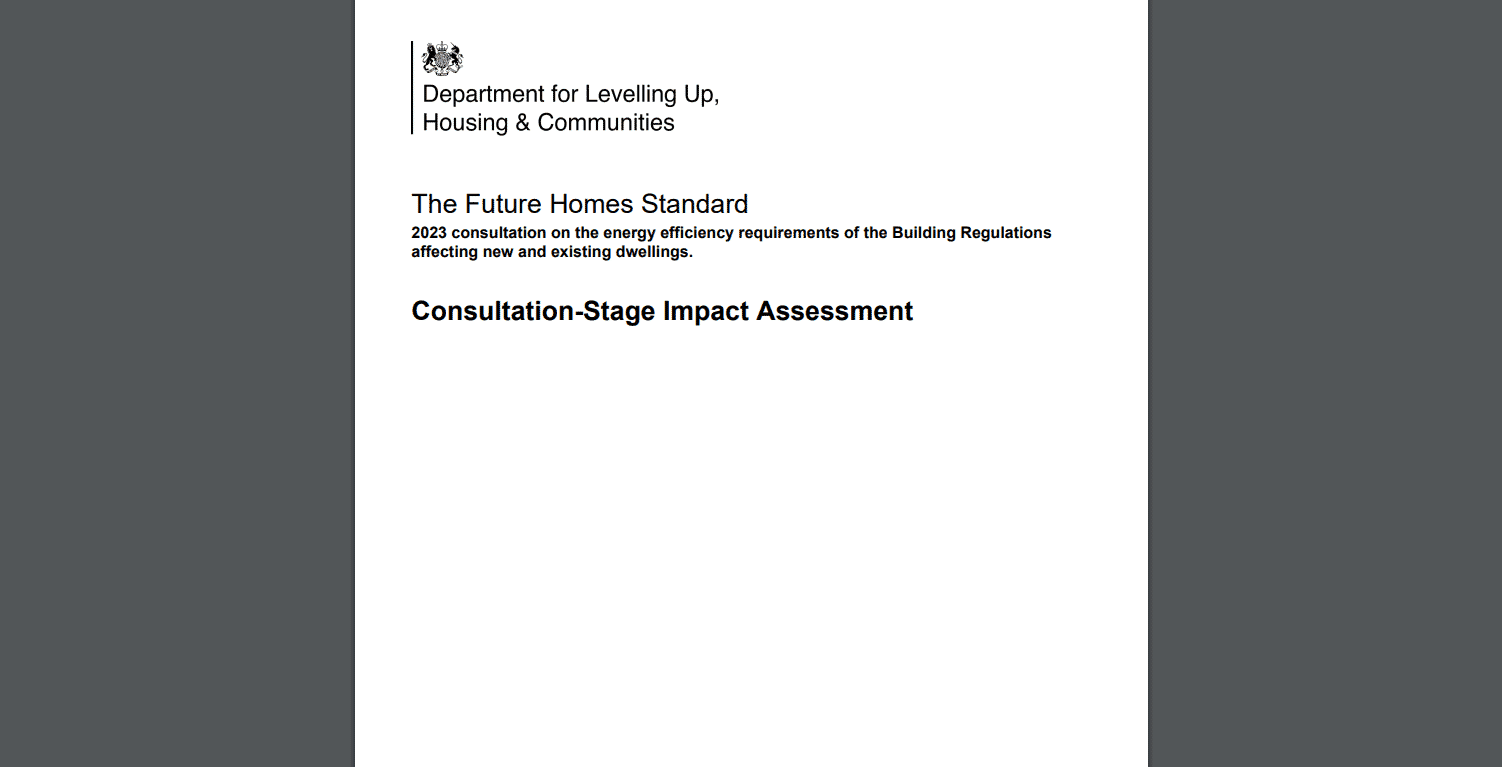
The Future Homes Standard: Initial Headlines
Regulatory Updates
The Future Homes Standard: Initial Headlines

The Future Homes Standard Consultation, published in December 2023, sets out energy performance targets for new homes and buildings, from 2025. The consultation closes on the 6th of March, so there’s just under 2 months if you’d like to respond. If you don’t fancy digesting the consultation in all its glory, here are the headlines:
Timeframes:
- Finalised approved documents to be published in 2024 (expect it to be towards the back end) with a 6 or 12 month period before they come into force.
- A one-year transitional period will apply following implementation. To avoid stepping up to the FHS, a building must have commenced work on site before this grace period expires. The definition of commencement has been updated to include completion of the lowest or ground floor, so work will need to start on a building well before the end of the grace period to avoid stepping up to the new standards.
Key Performance Measures:
The government are consulting on two possible compliance specifications for residential development, with the major headlines being:
- The existing metrics we used to assess energy performance are unchanged – so the Target Emission Rate, Target Primary Energy Rating and Target Fabric Energy Efficiency Standard remain for the FHS.
- Compliance cannot be delivered through the use of gas boilers or direct electric heating systems. Heat pumps and district heat networks are expected to be the way forward.
- Fabric performance standards are unchanged from Part L 2021. This will come as a surprise for many, with the consultation effectively saying we’re in marginal gains territory if these standards are bettered.
- Two compliance specifications are proposed. Option 1 with PV and waste water heat recovery and Option 2, without either. Option 1 is effectively net zero (regulated emissions only), with option 2 providing an approx. 75% reduction on 2013 standards. The full compliance specification is set out below, although worth noting that PV is not assumed in the compliance specification for high rise apartments.
| Building Element | Option 1 | Option 2 |
| Roof | 0.11 | |
| External Wall | 0.18 | |
| Floor | 0.13 | |
| Windows | 1.2 | |
| Door | 1.0 | |
| Wastewater Heat Recovery | Yes, except single-story dwellings, inc apartments | No |
| Heat Source | Air Source Heat Pump or DHN | |
| Air Tightness | 4 | 5 |
| Ventilation | System 3 – dMEV | System 1 – Natural Vent and intermittent extract |
| Renewable Energy | PV covering equivalent of 40% of ground floor area for houses or flats, dwelling floor area divided by no. storeys | None |
For non-residential development, again two options are proposed, based on different PV array specifications.
| Building Element | Option 1 – Recommended | Option 2 |
| Solar PV Provision equivalent to | Side lit spaces: 40% of buildings foundation area
Top lit spaces: 75% |
Side lit spaces: 20% of buildings foundation area
Top lit spaces: 40% |
Overheating:
No changes are proposed to the current overheating methodology for AD O, however, there is a call for evidence and feedback – should AD O apply to change of use development? Could it be improved or clarified? What challenges does it bring?
The Home Energy Model:
SAP as we know it will be no more and is due to be replaced with the Home Energy Model. A from the ground up new methodology designed to assess energy performance and better align to new technology more accurately. It’s early days, but we know the HEM will be significantly more involved than SAP, require much more data input and therefore likely elongate the assessment process, requiring a much higher level of accuracy.
These are the initial headlines from the consultation, although as always, the devil is in the detail and there is certainly a lot of that. If you’d like to know more, please sign up to our webinar on Wednesday 7th February – click here for more details – and look out for more updates from us in the coming weeks.






